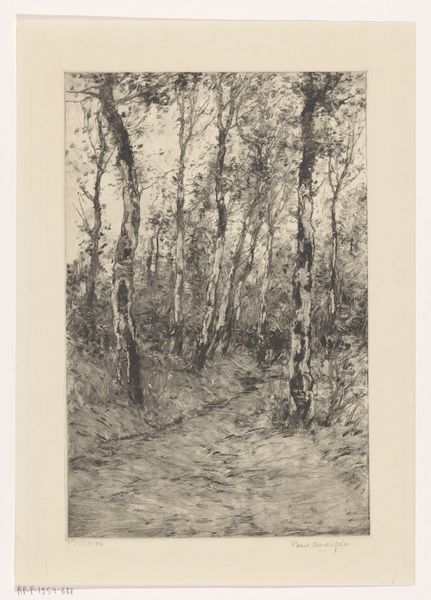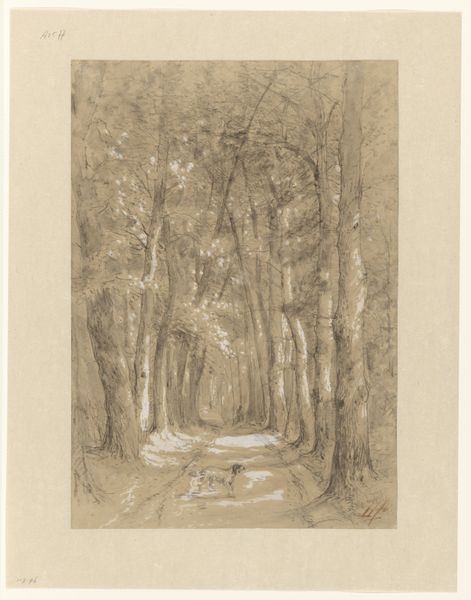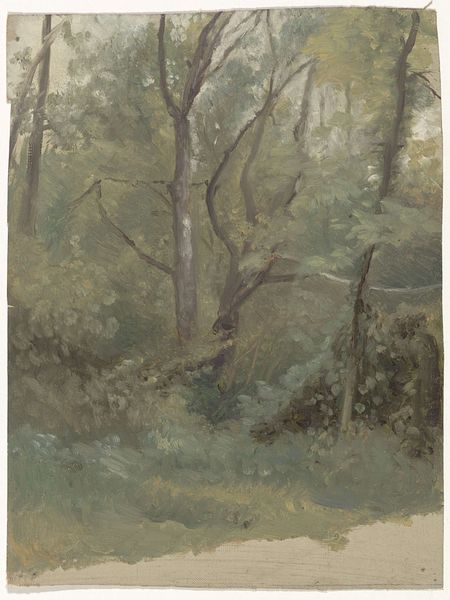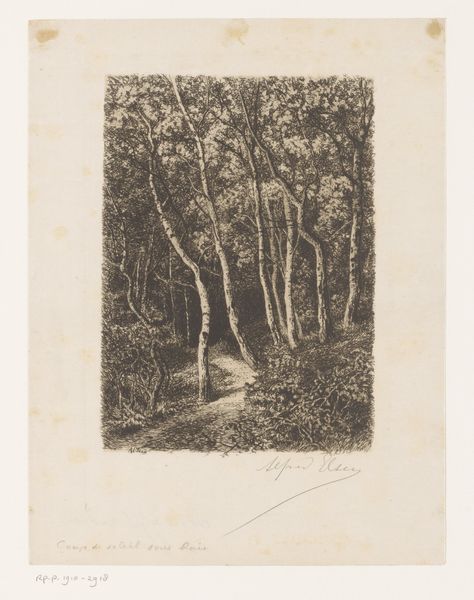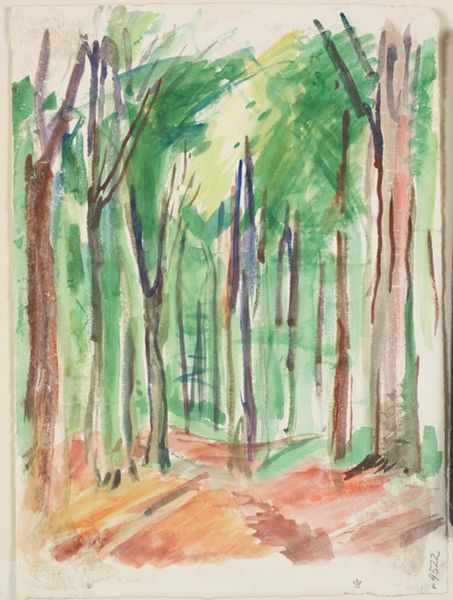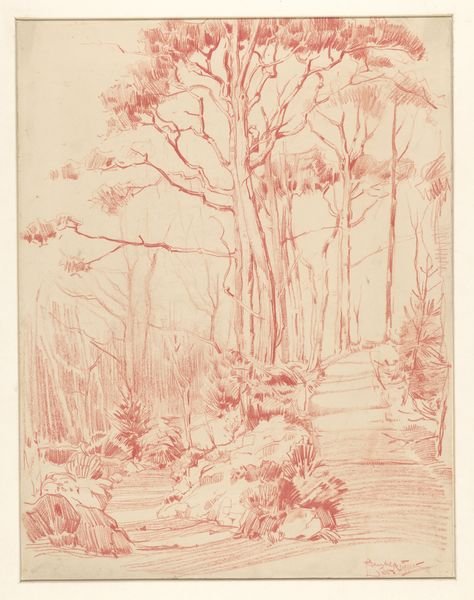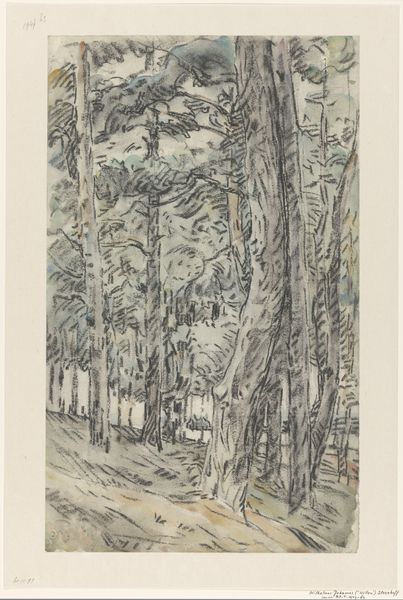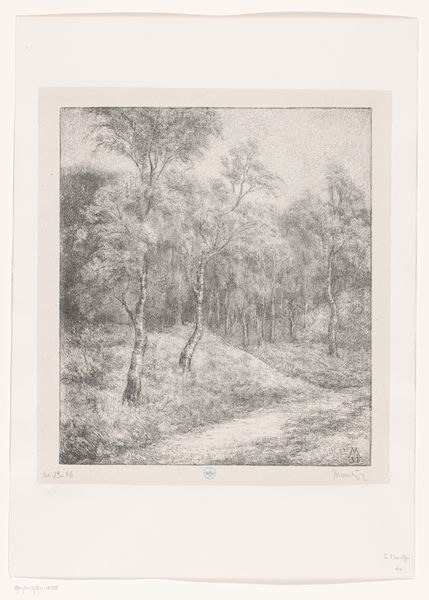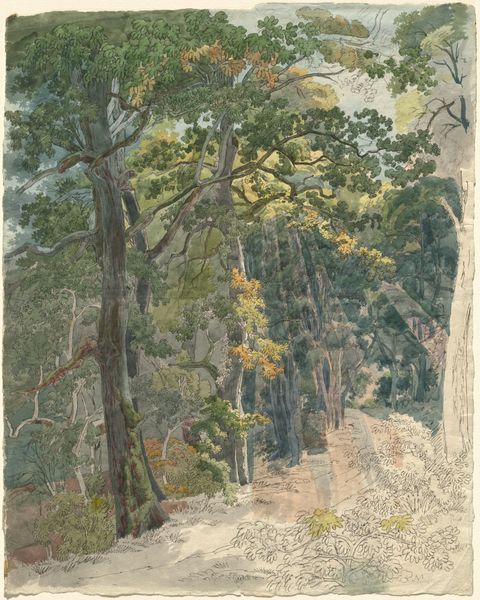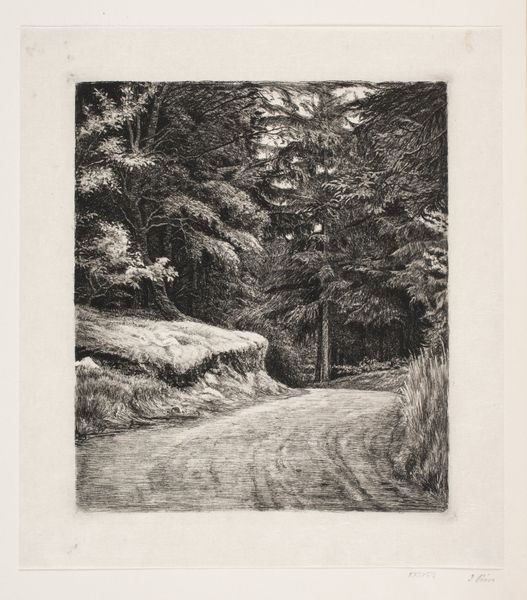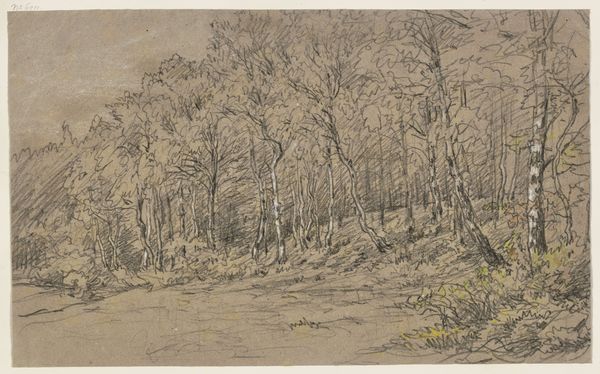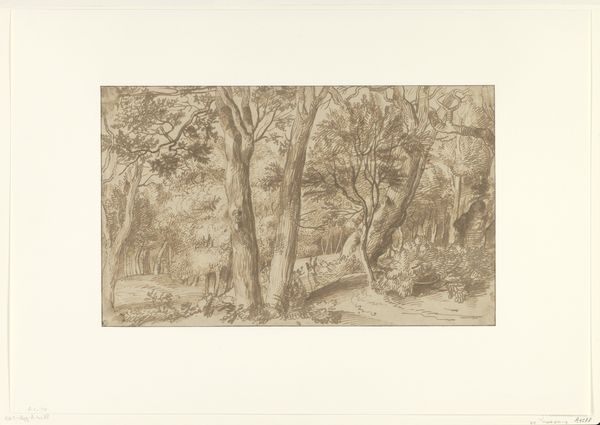
Dimensions: height 183 mm, width 129 mm
Copyright: Rijks Museum: Open Domain
Editor: So this watercolor painting, "Bosweg door de heuvels te Baden-Baden," by Carel Nicolaas Storm van 's-Gravesande, made in 1907... It's peaceful, a path winding through a forest. I’m wondering, what narratives do you see emerging from this seemingly simple landscape? Curator: The beauty of this piece lies in its deceptive simplicity. It invites us to consider not just the landscape itself, but the socio-political context it exists within. Consider, whose paths are typically represented, and who is given access to these spaces of leisure? Editor: That's a great point, the idea of access. I hadn't considered the social dimensions of even just strolling through nature. Curator: Exactly. Think about the period—1907. Who would have had the privilege to wander freely in Baden-Baden, a known spa town, taking in the scenery, when landscape painting often reinforced a sense of ownership? The figure on the path becomes particularly poignant, wouldn’t you agree? What could this be communicating? Editor: I do now that you point that out! It’s easy to see it as just a tranquil scene, but when you consider the limited access for many, it does carry a different weight. Maybe even suggesting something about freedom? Curator: Precisely. Landscape art has historically been used to convey ideas about national identity, ownership, and even power dynamics. Even in its apparent gentleness, this watercolor hints at complex social issues surrounding leisure, access, and representation, reminding us to question whose stories are told and whose are often erased from the frame. Editor: I see the landscape tradition so differently now! Thanks. I definitely have some new perspectives to consider. Curator: Absolutely, and this work is only a starting point, an invitation to engage with landscape art, or really any work of art, in this intersectional way.
Comments
No comments
Be the first to comment and join the conversation on the ultimate creative platform.
